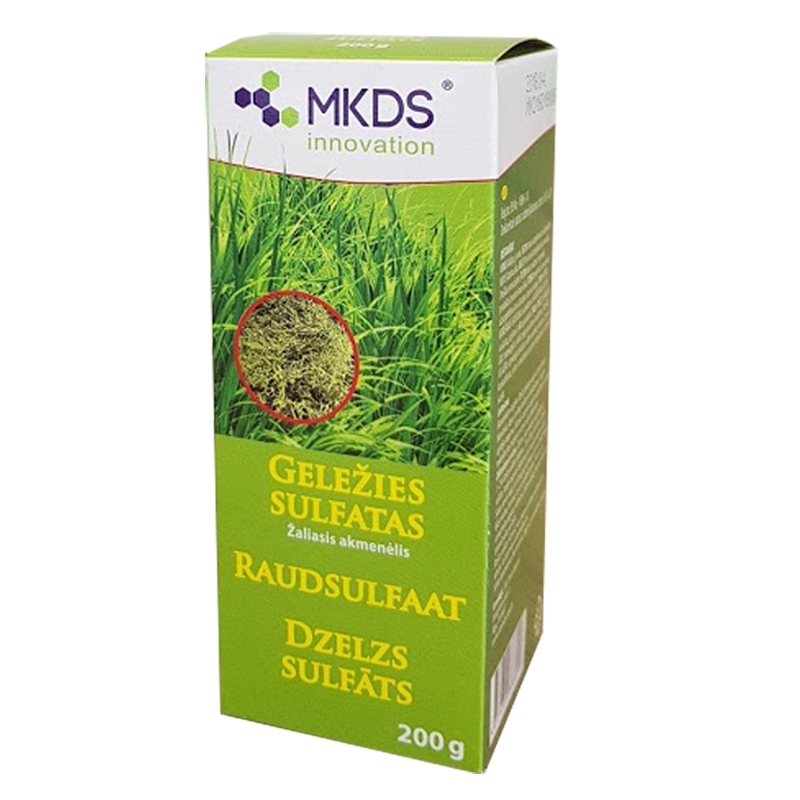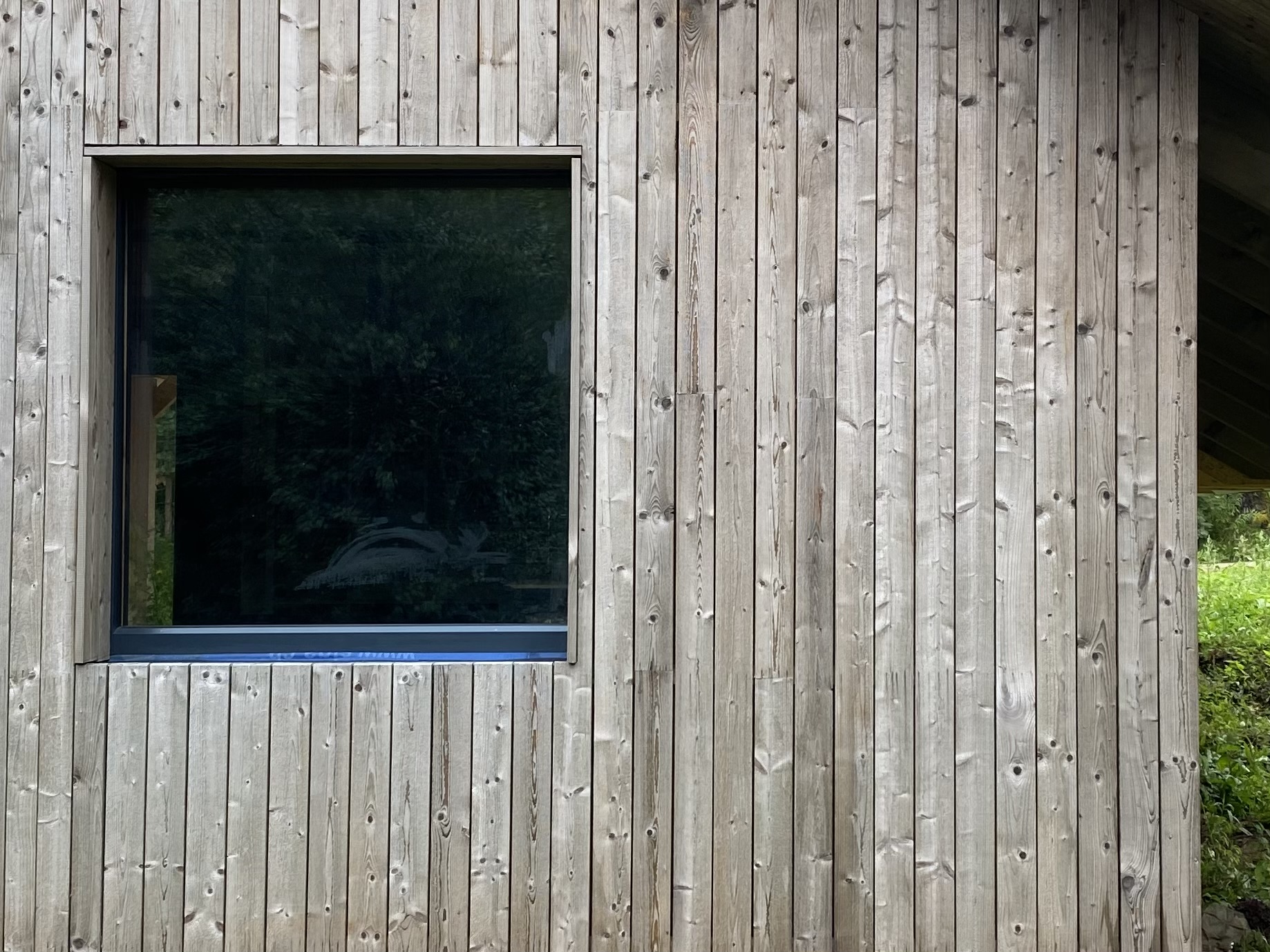The ideal wood siding is one that doesn’t need maintenance and looks consistent for the duration of its lifetime. The only look that will stay consistent is the natural gray or silver patina (everything else gets knocked out by the ultraviolet radiation from the sun) so that’s what I was after when researching the options for the siding of our passive house.
Ideally, the treatment would:
- achieve the desired look and
- preserve the wood as much as possible.
The best option is thermally modified wood where the boards are literally heated in large ovens to remove all moisture and then cooled down while using steam to re-introduce water in a controlled way.
I wanted to find an alternative which would be cheaper and could be applied to the most basic wood available locally.
The Magic of Iron (II) Sulphate
Iron (II) sulphate (FeSO4) can be used to accelerate the natural greying of wood to create a nice weathered patina look way faster than waiting for years. It works by removing with the tannins, lignin and the natural sugars in the wood (see this research paper on Staining Effect of Iron (II) Sulfate on Nine Different Wooden Substrates). It doesn’t help with preserving the wood or protecting it against weather, UV radiation or fungi, though.
Iron (ii) sulphate is a green powder which available in most gardening stores (usually known as Iron Vitriol) as a fertilizer for grass and loans, and to get rid of moss:

Our Experiment with 4% Iron Sulphate Solution
Here are photos of spruce siding being treated with a 4% solution of iron sulphate using a garden sprayer. It is important to note that the siding was installed 8 month earlier so the effect of treatment is faster and more visible than if it was applied right after the installation (when the boards were recently sawn).





Conclusions
The 4% solution is ideal for soft woods like spruce and pine. The color change is visible right away as long as the wood has been exposed to light for 3 to 6 month. Other spices of wood might require different amounts to achieve the same result.
Important: using 10% and 20% solution leaves behind unreacted salts (iron compounds and sulfates) which migrate to the wood surface with moisture and crystalize as white residue:

Improving Wood Resistance
Could we mix the iron sulphate with additional components to actually help preserve the wood? Turns out there a bunch of other readily available components that can help with that:
- Sodium silicate or liquid glass is used to seal concrete and does something similar to wood.
- Potassium silicate is used to harden wood when making violins.
- Calcium hydroxide or “slaked lime” to help lock silica inside the wood.
- Borax protects against fungi growth and insects.
I’m planning to experiment with the following solution (for 1 liter):
- 600ml warm water at 40C.
- 100ml sodium silicate solution (30%).
- 50ml potassium silicate solution (30%), if available (or use more sodium silicate).
- 10g iron sulphate.
- 10g borax.
- 1-2g of calcium hydroxide (if available).
- 0.5g or a pinch of lime as citric acid.
- 3 drops of mild dish soap.
This blend integrates:
- Silicate blend (sodium + potassium) penetrates the wood and forms a silica network within the cell walls. As the solution dries the silicates polymerize into insoluble silica gels, creating a mineralized surface layer that hardens the wood and makes it less attractive to fungi.
- Catalyst (iron sulphate) helps fix the silicates by crosslinking them into less soluble forms while also reacting with lignin and tannins to form iron–tannate complexes that give the characteristic grey patina.
- Bioprotection (borax) provides long-term resistance against fungi and insects by diffusing into the wood and disrupting their metabolic processes.
- Fixation control (lime or citric acid) adjusts the highly alkaline silicate solution to a more favorable pH. A small addition of lime encourages the formation of calcium silicate hydrates, while a touch of citric acid can guide gelation and precipitation inside the fibers, preventing salts from crystallizing on the surface.
- Wetting agent (soap) reduces surface tension, allowing the solution to spread and absorb more evenly into the wood instead of beading or leaving untreated patches.
AI is suggesting the following additions which I might consider as well:
- Colloidal silica (10ml of 30% solution) or a concrete densifier contains ultra-fine silica particles that penetrate more deeply into the wood and bond with the silicate network, improving hardness and reducing surface bloom.
- Isopropyl alcohol (200ml, 70–99%) as a partial water replacement to lower surface tension. This helps the treatment wet the fibers more effectively, improves penetration in resinous pine, and speeds up drying.
This kind of treatment is expected to increase the lifetime of wood siding by 100% taking it from approximately 12 years to 25 years.
Related Resources
- The Staining Effect of Iron (II) Sulfate on Nine Different Wooden Substrates (PDF)
- Sodium silicate coated wood (PDF)
Comments and Suggestions
Have you done any experiments with this? Please share them in the comments!
Likes